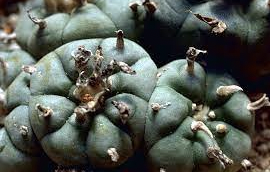First it was the Toad and now unsurprisingly the Peyote cactus is under threat.
High Times
Native American and preservationist advocates are sounding the alarm about an imminent “peyote crisis.” The crisis started decades ago, but recently has been amplified by pharmaceutical interests in mescaline, the psychoactive compound the cactus is known for.
The mescaline-rich spineless cactus, Lophophora williamsii, has been used in sacred rituals for over 5,000 years by American indigenous cultures, but through careless harvesting by recreational users, or worse, mass produced pharmaceutical companies, all of that could soon be lost. In the U.S. the cactus only grows wild in Texas—where it’s been declared an endangered species—as well as Chihuahua, Coahuila, Nuevo León, and Tamaulipas in northern Mexico.
The cactus is currently being monetized for either pharmaceutical or recreational use, and indigenous groups like the Native American Church (NAC) are concerned that the sacred plant is being exploited. In the December 1977 issue of High Times, journalist J. F. Burke wrote about his journey with peyote that started in 1957, one of the first in-depth articles about the plant, just as the federal government was making exemptions for a short list of Native Americans. Since then, a lot of hippies, psychonauts, and wannabe shamans have scoured the earth looking for ways to find it.
The American Indian Religious Freedom Act of 1978 (42 U.S.C. § 1996.) protects the rights of Native Americans to exercise their traditional religions–including psychedelic sacraments. On Dec. 22, 1981, the Department of Justice reiterated the DEA’s peyote exemption for the NAC, but only bona fide members of the church are included. Only allowing that single church was challenged in 1994 under Peyote Way Church of God, Inc. v. Thornburgh and Congress amended the American Indian Religious Freedom Act to legalize peyote use by all members of Native American tribes.
Read more


















